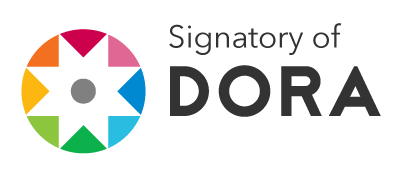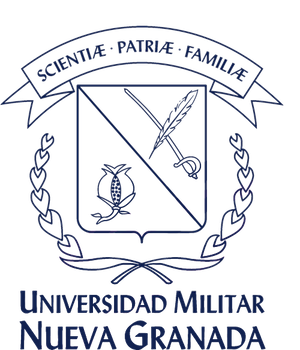Natural Occurrence and Ecology of Trichogramma pretiosum (Hymenoptera: Trichogrammatidae) in Cotton Plantations with Insecticides Spraying in Minas Gerais State, Brazil
Resumen
Pest damage is one of the greatest problems in cotton production in the world. The objective of this study was to assess the natural occurrence, parasitism rate, number of adults ofTrichogramma emerged and coexistence with predators species in cotton plantations with insecticide spraying in Brazil. Parasitoids were collected in two areas of two-hectares each with the Dp 4049 and Delta Opal cotton varieties, using 12.0 x 2.5 cm pieces of white cards with an average of 3.000 Anagasta kuehniella (Zeller) (Lepidoptera: Pyralidae) eggs each. The predation percentage of A. kuehniella eggs in the field and parasitism occurrence was estimated based on the cards with eggs of this prey brought from the field. All parasitoids obtained were identified as Trichogramma pretiosum (Riley) (Hymenoptera: Trichogrammatidae). The predators collected were identified as belonging to the families Chrysopidae (Neuroptera), Coccinelidae (Coleoptera) and Sirphidae (Diptera). The average number of eggs parasitized per cardboard, during the cycle of this culture was 16.34 ± 5.1 in the area with Dp-4049 and 23.38 ± 4.3 in that with Delta opal. The predation average during the cycle of this culture was 42.58 ± 3.8 e 35.58 ± 2.9% in these areas, respectively. It is necessary to preserve and to increase the performance of T. pretiosum in cotton plantations.Descargas
Lenguajes:
ENReferencias bibliográficas
Alencar JA, Haji FNP, Oliveira JV. 2000. Biologia de Trichogramma pretiosum Riley em ovos de Sitotroga cerealella (Olivier). Pesquisa Agropecuária Brasileira, 35:1669-1674.
Avilla C, Gonzalez-Zamora JE. 2010. Monitoring resistance of Helicoverpa armigera to different insecticidas used in cotton in Spain. Crop Protection, 29:100-103.
Babendreier D, Rostas M, Höfte MCJ, Kuske S, Bigler F. 2003. Effects of mass releases of Trichogramma brassicae on predatory insects in maize. Entomologia Experimentalis et Applicata, 108:115–124.
Barnay O, Hommay G, Gertz C, Kienlen JC, Schubert G, Marro JP, Pizzol J, Chavigny P. 2001. Survey of natural populations of Trichogramma (Hymenoptera: Trichogrammatidae) in the vineyards of Alsace (France). Journal of Applied Entomology, 125:469-477.
Bartlett BR. 1963. The contact toxicity of some pesticide residues to hymenopterus parasites and coccinellid predators. Journal of Economic Entomology, 56:696-698.
Bleicher E, Parra JRP. 1990. Espécies de Trichogramma parasitóides de Alabama argillacea. II. Tabela de vida de fertilidade e parasitismo de três populações. Pesquisa Agropecuária Brasileira, 25:207-214.
Cônsoli FL, Botelho PSM, Parra JRP. 2001. Selectivity of insecticides to the egg parasitoid Trichogramma galloi Zucchi, 1988, (Hymenoptera: Trichogrammatidae). Journal of Applied Entomology, 125:37-43.
Crist TO, Pradhan-Devare SV, Summerville KS. 2006. Spatial variation in insect community and species responses to habitat loss and plant community composition. Oecology, 147:510-521.
de Almeida, R.P. 2001. Cotton insect pest control on a small farm: an approach of successful biological control using Trichogramma. Proceedings of the Section Experimental and Applied Entomology , 12:81-84.
Gerling D, Naranjo SE. 1998. The effect of insecticide treatments in cotton fields on the levels of parasitism of Bemisia tabaci (Gennadius) sl. Biological Control, 12:33-41.
Gingras D, Dutilleul P, Boivin G. 2002. Modelling the impact of plant structure on hostfinding behaviour of parasitoids. Oecology, 130:396-402.
Hegazi EM, Herz A, Hassan S, Gamy E, Khafagi W, Shweil S, Zaitun A, Mostafa S, Hafez M, El-Shazly A, El-Said S, Aboabdala L, Khamis N, El-Kemny S. 2005. Naturally occurring Trichogramma species in olive farms in Egypt. Insect Science, 12:185-192.
Hoballah ME, Degen T, Bergvinson D, Savidan A, Tamo C, Turlings TCJ. 2004. Occurrence and direct control potential of parasitoids and predators of the fall armyworm (Lepidoptera: Noctuidae) on maize in the subtropical lowlands of Mexico. Agricultural and Forest Entomology, 6:83–88.
Ksentini I, Monie JC, Jardak T, Zeghal N. 2010. Naturally occurring egg parasitoids of the genus Trichogramma (Hymenoptera: Trichogrammatidae) in a pomegranate orchard in Tunisia. Entomological Science, 13:99-106.
Maceda A, Hohmann CL, Santos HR. 2003. Temperature effects on Trichogramma pretiosum Riley and Trichogrammatoidea annulata de Santis. Brazilian Archives of Biology and Technology, 46:27-32.
Men X, Ge F, Edwards CA, Yardim EN. 2004. Influence of pesticide applications on pest and predatory arthropods associated with transgenic Bt cotton and nontransgenic cotton plants. Phytoparasitica, 32:246-254.
Moura MF, Picanço M, Gonring AHR, Bruckner CH. 2000. Seletividade de inseticidas a três Vespidae predadores de Dione juno juno (Lepidoptera: Heliconidae). Pesquisa Agropecuária Brasileira, 35:251-257.
Oliveira HN, Zanuncio JC, Pratissoli D, Cruz I. 2000. Parasitism rate and viability of Trichogramma maxacalli (Hymenoptera: Trichogrammatidae) parasitoid of the Eucalyptus defoliator Euselasia apison (Lepidoptera: Riodinidae), on eggs of Anagasta kuehniella (Lepidoptera: Pyralidae). Forest Ecology and Management, 130:1-6.
Oliveira HN, Zanuncio JC, Pratissoli D, Picanço MC. 2003. Biological characteristics of Trichogramma maxacalii (Hymenoptera: Trichogrammatidae) on eggs of Anagasta kuehniella (Lepidoptera: Pyralidae). Brazilian Journal of Biology, 63:647-653.
Oliveira HN, De Clercq P, Zanuncio JC, Pratissoli D, Pedruzzi EP. 2004. Nymphal development and feeding preference of Podisus maculiventris (Heteroptera: Pentatomidae) on eggs of Ephestia kuehniella (Lepidoptera: Pyralidae) parasitised or not by Trichogramma brassicae (Hymenoptera: Trichogrammatidae). Brazilian Journal of Biology, 64:459-463.
Olson DM, Wäckers FL. 2007. Management of field margins to maximize multiple ecological services. Journal of Applied Ecology, 44:13–21.
Pratissoli D, Parra JRP. 2000. Desenvolvimento e exigências térmicas de Trichogramma pretiosum Riley, criados em duas traças do tomateiro. Pesquisa Agropecuária Brasileira, 35:1281- 1288.
Pratissoli D, Zanuncio JC, Vianna UR, Andrade GS, Guimarães EM, Espindula MC 2004. Fertility life table of Trichogramma pretiosum and Trichogramma acacioi on eggs of Anagasta kuehniella at different temperatures. Pesquisa Agropecuária Brasileira, 39:193-196.
Pratissoli D, Zanuncio JC, Vianna UR, Andrade JS, Pinon TBM. 2005. Biological characteristics of Trichogramma pretiosum and Trichogramma acacioi (Hymenoptera: Trichogrammatidae), parasitoids of the avocado defoliator Nipteria panacea (Lepidoptera: Geometridae), on eggs of Anagasta kuehniella (Lepidoptera: Pyralidae). Brazilian Archives of Biology and Technology, 48:7-13.
Pratissoli D, Fornazier MJ, Holtz AM, Gonçalves JR, Chioramital AB, Zago HB. 2003. Ocorrência de Trichogramma pretiosum em áreas comerciais de tomate, no Espírito Santo, em regiões de diferentes altitudes. Horticultura Brasileira, 21:73-76.
Quirino ES, Soares JJ. 2001. Efeito do ataque de Alabama argillacea no crescimento vegetativo e sua relação com a fenologia do algodoeiro. Pesquisa Agropecuária Brasileira, 36:1005-1010.
Scott AJ, Knott MA. 1974. A cluster analysis method for grouping means in the analysis of variance. Biometrics, 30:507-512.
Soares MA, Zanuncio JC, Leite GLD, Wermelinger ED, Serrão JE. 2009. Does Thyrinteina arnobia (Lepidoptera: Geometridae) use different defense behaviours against predators? Journal of Plant Diseases and Protection 116:30-33.
Soares MA, Leite GLD, Zanuncio JC, Rocha SL, de Sá VGM, Serrão JE. 2007. Flight capacity, parasitism and emergence of five Trichogramma (Hymenoptera: Trichogrammatidae) species from forest areas in Brazil. Phytoparasitica, 35:314-318.
Stein CP, Parra JRP. 1987. Uso da radiação ultravioleta para inviabilizar ovos de Anagasta kuehniella (Zeller, 1879) visando estudos com Trichogramma. Anais da Sociedade Entomológica do Brasil, 16:229-234.
Van Lenteren JC, Bueno VHP. 2003. Augmentative biological control of arthropods in Latin America. BioControl, 48:123–139.
Wu KM, Guo YY. 2005. The evolution of cotton pest management practices in China. Annual Review of Entomology, 50:31–52.












